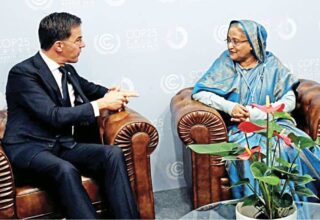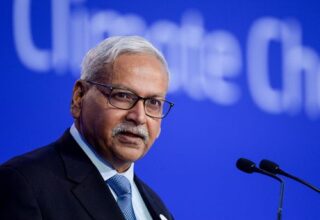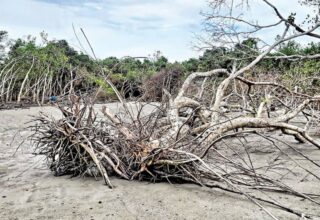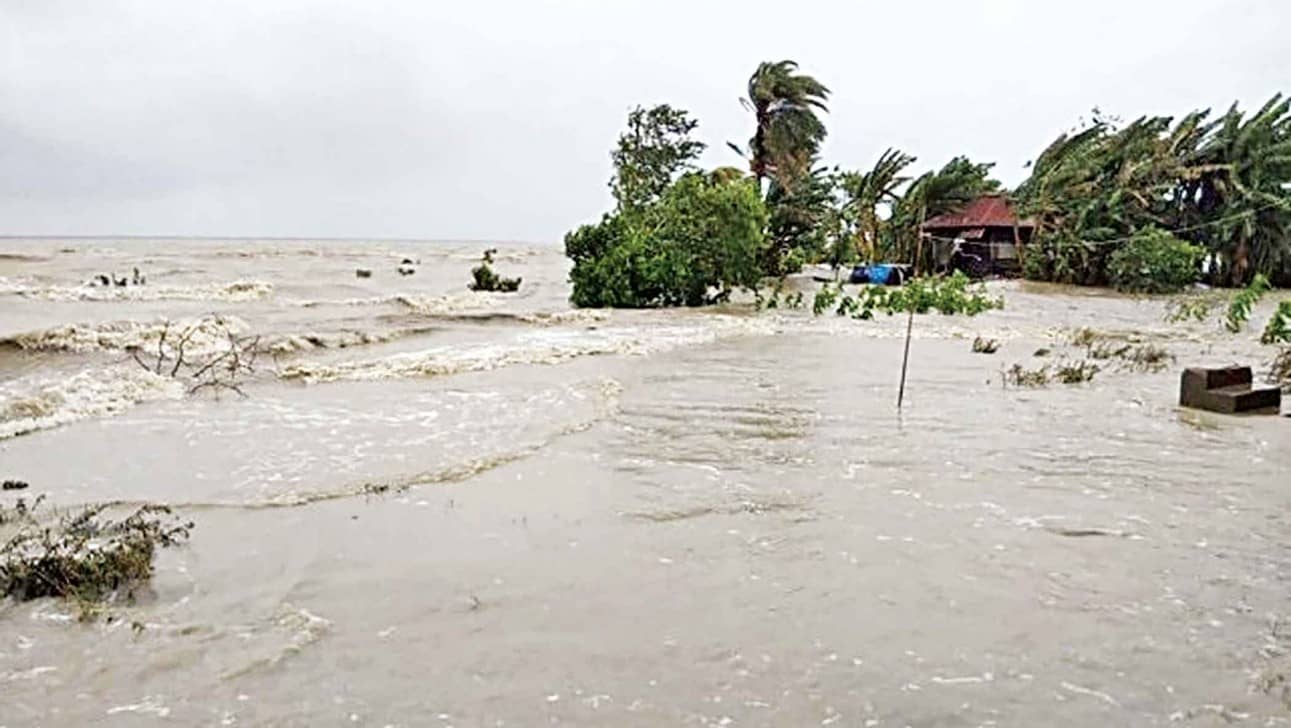
What will Bangladesh look like in 2050? A layman’s projection allows us to draw a picture of its basic parameters. In terms of population, Bangladesh can reach a number of 230-240 million, with an average growth rate of 1.2 percent/year. The density of population will be around 1700/sq.km, the highest ever in the world. Considering a consistent economic growth rate of 8 percent/year, the size of our economy, i.e. GDP will be more than three times larger—this means from its current volume of about USD 270 billion, it will shoot up to USD 2.5 trillion in 2050. This will give a per capita GDP of over USD 12,000 in current prices. So, the vision of Prime Minister Sheikh Hasina will come true by 2041—a developed Bangladesh.
Can such an uninterrupted trajectory of rapid growth be ensured, while maintaining environmental sustainability? This is a hard question to answer. We already see not a single drop of fresh water in Bangladesh’s rivers and canals, not to talk of its chemical composition. What will happen when the size of the economy trebles in the next three decades? Based on global experience, we must say that Bangladesh cannot afford to traverse the trajectory of environmental Kuznet’s curve, with bending the pollution curve after the now rich countries have reached a per capita income of 5-6 thousand US dollars. Ours is a small sized country with unprecedented biotic pressure, both from poverty and rapid economic growth on very limited natural resources.
So, we have to proceed with a strategy simultaneously of growth, equity and environmental protection, not growth first and environment later. We actually need more of development—an improvement in quality of people’s lives, not just growth—a physical expansion of the economy, which not always leads to development. The case of Dhaka city is an example. We must have the vision of liveable cities in Bangladesh by 2050. Then comes the main challenge of the day—the increasingly frequent climate events like floods, cyclones, tidal surge, sea-level rise and the resulting salinity intrusion and permanent inundation of our coastlands. The world has already crossed the one-degree temperature rise, compared to the pre-industrial level. For all practical purposes, the world cannot meet the aspirational target of maximum rise of 1.50 degrees Celsius agreed under the Paris Agreement. According to IPCC report (2018), global greenhouse gas emissions will need to be halved by 2030 and reach net zero by mid-century in order to have a good chance of holding temperature increase to 1.5 degrees C. Against this, there are estimates that given 100 percent compliance of the submitted NDC pledges of emissions reduction, the world will witness a rise of over 30C. And this is the average.
In tropical countries of Africa and Asia including in Bangladesh, the rise is likely to be more than the global average. Already extreme climate events with its higher frequency and severity have become the “new normal”. In this unfolding scenario, Bangladesh is recognised globally as one of the most vulnerable countries in the world. There is yet no authoritative national assessment of loss and damage costs from climate impacts, or the need for adaptation and mitigation investments. However, a number of multilateral development agencies, few international think tanks and the Bangladesh government have many different cost estimations—both current and future, which cover economy-wide, sectoral and disaster type-based climate impacts. The estimated loss to GDP ranges from 0.5 to 2 percent by 2050. Overall, total costs vary between USD 3 billion to USD 5 billion a year up by 2050, while the investment needs for adaptation in agriculture sector and infrastructure range from USD 1 billion to USD 10 billion a year.
During the next three decades, absolute costs to the economy will go higher and higher. In such circumstances, can Bangladesh, with its sandwiched geographical location between the Himalayas in the North and Bay of Bengal in the South, aspire to be a climate resilient society by 2050? We believe it can, given a well-planned strategy that we follow with total commitment.
We may recall that the 2041 Perspective Plan relies on four institutional pillars to be harnessed by the people, who are the principal drivers of growth and transformation. These are: (i) democratisation; ii) decentralisation; iii) governance; and (iv) capacity building. In this short space, we will focus on three pillars, beginning with decentralisation, then governance and capacity building.
With prioritisation of climate change adaptation as a central strategy of development, Bangladesh is already a recognised leader globally in adaptation and resilience. The former UN Secretary General Ban Ki Moon calls Bangladesh a “teacher” in adaptation for the global community to learn from. By taking over the leadership of the Climate Vulnerable Forum (CVF) for the next two years, Bangladesh has the opportunity to represent vulnerable countries at global forums like COP26, to lead the South-South sharing of knowledge and experience and in adaptation among the vulnerable countries. In the era of Covid-19, this provides Bangladesh the space to show both national and global leadership how to tackle the climate change emergency. Bangladesh has a solid record of decentralised, successful community-based disaster management, which is acclaimed the world over. The recently-established South Asian Regional Adaptation Centre in Dhaka can be a hub of excellence, as an effective platform in this regard. The
The centre will have a focus on locally led adaptation which has proven its efficacy in many developing countries. We have the vision of Switzerland, a country truly locally-led.
As adaptation is inherently locale and region-specific, the challenge is to change the current top-down paradigm of targeting vulnerable communities by governments as well as global funds and agencies, to a bottom-up approach. This will warrant an inclusion of the local communities in the design, implementation and monitoring of the adaptation support to make them more effective. For example, for handling the increasing number of climate migrants particularly from coastal areas, we can prepare a bottom-up plan for their relocation, to settle them, not in Dhaka, but in nearby towns and growth centres which can be made migrant-friendly, with basic services and facilities at affordable cost. The on-going preparation of the National Adaptation Plan led by the Ministry of Environment, Forests and Climate Change can realise the paradigm of a genuinely decentralised development planning and implementation in Bangladesh. Therefore, the most fundamental way for change is to consider the Bangladesh NAP as an investment, rather than a short time-bound project, initiated and implemented by central authorities.
Next comes the pillar of governance. A process of transparent and accountable governance is another key to our 2050 vision of a resilient Bangladesh. Here the primary focus should be on allocation of investments for addressing climate change, particularly for adaptation actions and its transparent governance. The government already has initiated a budget line dedicated to climate investment and this year’s budget has allocated an amount of almost USD 3 billion, which equals to almost 8 percent of our annual budget. This compares with a measly amount of average USD 300 million a year that our country gets as international support to address climate change. So the challenge is—how to make the best use of these investments. Also mobilising international support from the Green Climate Fund and other sources, particularly the grant part of climate finance is important for Bangladesh, as our graduation soon out of the LDC status will entail a decline in grant part of foreign aid that we get each year. We must remember based on evidence that international public support for adaptation flows not to the most vulnerable, but to countries with best fiduciary management systems. Similar is the case with foreign direct investment, a vital element for rapid economic growth in any developing country, which flows to regions with transparent business environment.
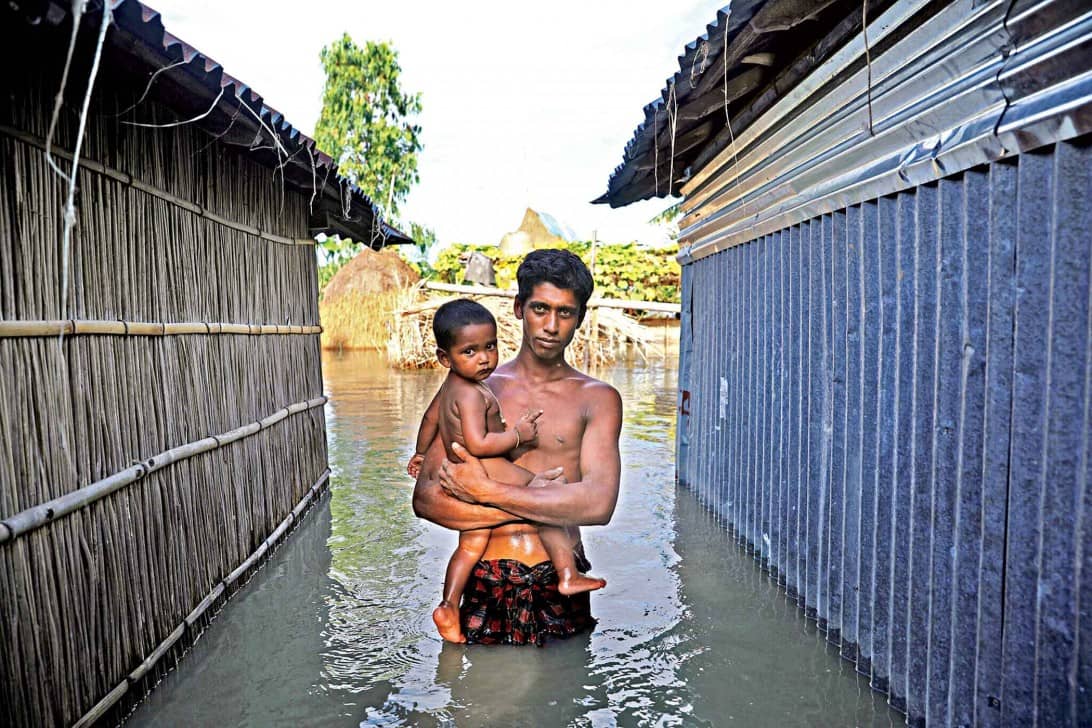
For mobilisation and allocation of climate finance, we must follow the principles, such as people’s vulnerability-and livelihood-centred approach, polluter-pays principle, revenue neutral way of environmental taxation for the government as well as for the citizens and private sector, decentralisation of allocation and mobilisation of climate finance, and a programmatic approach for implementation of the plans and strategies.
Though environmental sustainability is typically a public good, public investments alone will not suffice to effectively address climate change. So innovative and appropriate fiscal, financial and charge systems, in light of experiences in other countries have to be worked out. This could be tax/levy (national/local), loans (low vs market-based interest), subsidies, grants, revolving funds, equity, introduction of green bond, insurance, CSR funds, etc. The Climate Fiscal Framework of Bangladesh outlines some possibilities for climate finance for Bangladesh. This needs to be operationalised in earnest.
Finally, the most important pillar of realising our vision 2050 is capacity building at all levels. In fact, a whole of society approach is needed—from awareness to education and skill development of all types, to research and development, with delineation of specific needs of skills, expertise and policy research for tackling climate change. Also achieving climate resilience will dictate that all kinds of professionals, lower and higher, must undergo basic training on how to tackle climate change, from perspective of each profession and trade.
Unfortunately, Bangladesh is not doing well in this regard. In terms of the Human Development Index, our country ranks lower than 150 countries. The productivity in the garment sector, our number one export earner and women’s employer, is the lowest among the main exporting countries. We also are in a poor position, as is demonstrated by the publication of last year’s Global Knowledge Index, where Bangladesh ranked 112th out of 138 countries— we were the lowest ranked in South Asia, with India ranking the highest in our region. This does not augur well for our vision of a developed country in the next three decades.
While Bangladesh is regarded poor in terms of natural resources, we can be rich through harnessing huge demographic dividend, potentially waiting to be exploited. The 2041 plan specifies, among others, some strategies for this, such as: i) Institution of a knowledge-based economy; ii) Population with 100 percent literacy rate; iii) Universal free education for up to 12 years; iv) job-oriented skill development in vocational and training institutions, etc. This will require much higher investment than is currently available, which is perhaps the lowest in South Asia in terms of the share of our budget.
We believe our single greatest national asset are our young girls and boys, and if we are able to invest in educating them better, we can indeed transition to a significant knowledge-based economy within the next decade. However, this will require a national consensus for us to make the necessary paradigm shift.
Originally this article was published on February 19, 2021 at Daily Star.
About The Authors
Prof. Saleemul Huq is the director of the International Centre for Climate Change and Development (ICCCAD) at the Independent University, Bangladesh (IUB).
Email: saleemul.huq@icccad.org
Dr. Mizan R Khan is the Deputy Director of International Centre for Climate Change & Development (ICCCAD), and Programme Director of LDC Universities’ Consortium on Climate Change (LUCCC).
Email: mizan.khan@icccad.org

